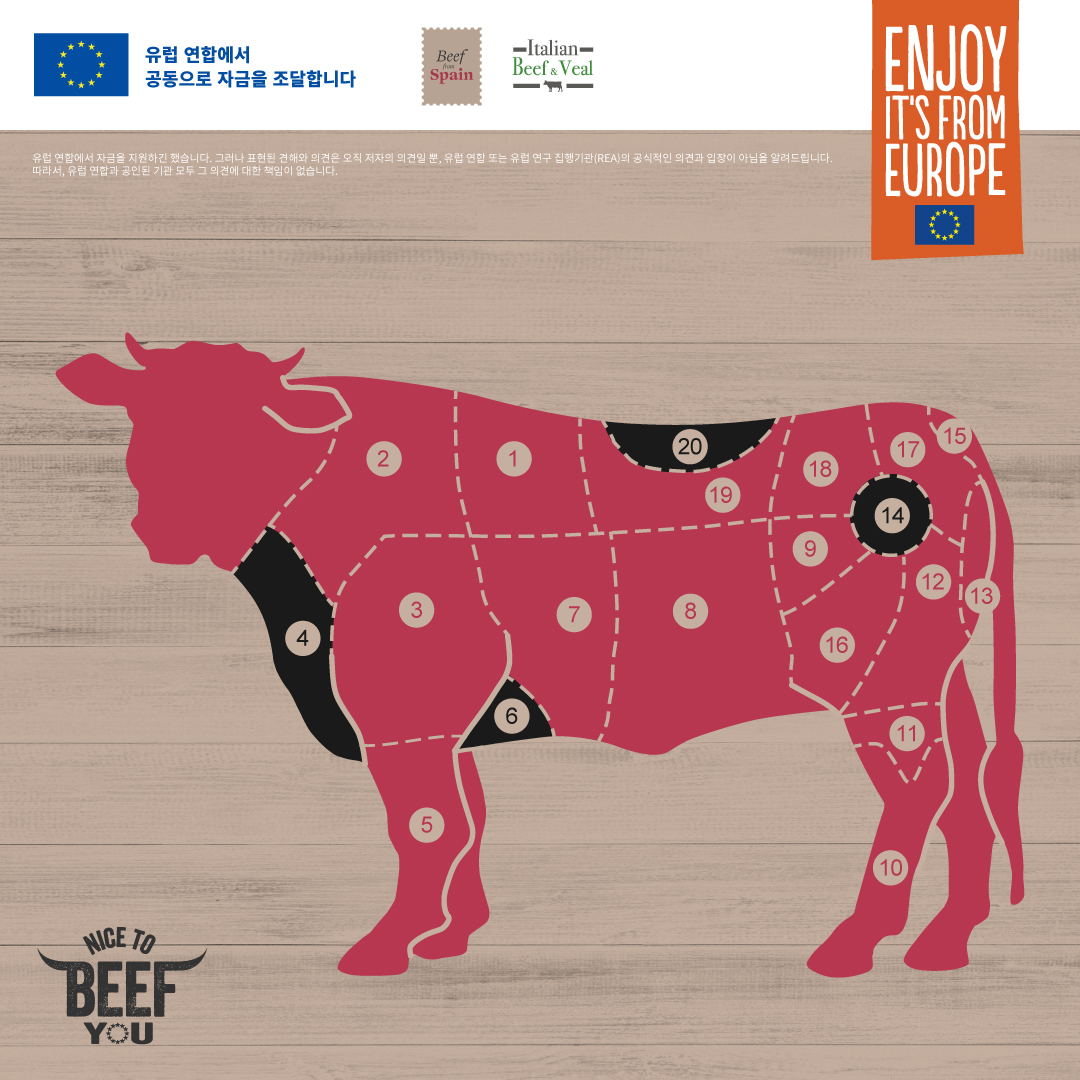
Italy is renowned worldwide for its culinary culture, with dishes made from European beef particularly renowned for their taste. In Italy, European beef is enjoyed by understanding and utilizing its various cuts and characteristics in cooking. Let’s delve into how Italy categorizes European beef cuts:
- Front Shank / Punta di petto
The Punta di petto refers to the meat from the front shank or chest. It is primarily known for its tenderness and suitability for braising or stewing. When slow-cooked for an extended period, it becomes tender with a rich flavor, often enjoyed with deep sauces.
Additionally, “Punta di petto” can be thinly sliced and prepared as a steak. This cut has a tender and moist texture, ideal for quick cooking on a grill or in a frying pan.
- Brisket / Petto
“Petto” refers to the chest or front of the animal, primarily indicating meat from the chest area. Known for its tender texture and rich juiciness, this cut is versatile and treated as an essential ingredient in Italian cuisine.
One of the most common uses is for stews or braising, cooked slowly over time to achieve tenderness and rich flavor. The “Petto” cut can also be sliced for dishes like meatloaf, stews, or gratins in Italian cuisine.
- Round / Fesa
“Fesa” generally refers to the “thigh” or “inner thigh” and signifies meat from the leg portion of the animal. It usually indicates a piece of fresh meat and is used in various ways in Italian cuisine.
A prominent dish made from “Fesa di vitello,” the veal thigh, involves grilling with spices or roasting to enhance the meat’s flavor. “Fesa di vitello” is also prepared as steaks, offering a light and tender taste.
The “Fesa” cut of Italian beef is suitable for various cooking methods, allowing you to enjoy the tender and flavorful meat from the leg portion.
- Loin / Lombata
“Lombata” refers to the loin area, meaning “back” in Italian, indicating the meat around the back or ribs of the animal. It is considered a crucial cut in Italian cuisine, known for its tenderness, lack of toughness, and rich juiciness.
In Italy, Lombata is prepared in various ways for enjoyment. The most traditional method involves making steaks. These steaks are quickly cooked on a grill or in a frying pan with fresh herbs and olive oil to enhance flavor, maintaining tenderness inside while achieving a crispy exterior. Lombata is also used for roasts or gratins, where proper seasoning and roasting in the oven bring out a tender and rich taste.
In this manner, different cuts of beef in Italy are cooked with appropriate methods, sauces, or seasonings to complement them. Enjoy a variety of rich Italian dishes made from various European beef cuts.
Photo credit: ©EUBEEFASIA



